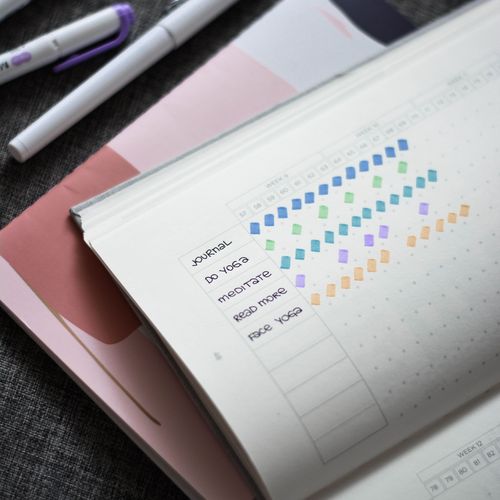The start of a new year is a time when many of us make resolutions to improve some aspect of our lives. However, research shows that most resolutions fail by February. This post looks at why resolutions fail and provides evidence-based strategies to help you achieve your goals this year.
The resolution failure rate
Research suggests that only around 20% of people who make new year’s resolutions are still keeping them 6 months later. While most people start off enthusiastic and committed, this motivation tends to dwindle as the year goes on. Why is it so difficult to make changes stick?
Why resolutions fail
There are several key reasons why people struggle to maintain resolutions:
- Setting unrealistic goals that are too difficult or vague
- Not making a detailed, step-by-step plan
- Trying to change too many things at once
- Not understanding your own motivations for making the change
- Not building new habits or behaviors consistently
Willpower – the limited resource
Why do our resolutions tend to fail after starting off strong? Willpower plays a key role.
Willpower is required for any behavior that involves overriding natural impulses or requires sustained focus and effort. Studies show willpower operates like a muscle – it temporarily gets fatigued when exerted.
When willpower is low, our brains look for a quick dopamine boost. This explains why stressful days can derail healthy habits.
Luckily, research reveals strategies to conserve willpower:
- Reduce daily decisions – Decide on habits, clothing or meals in advance to avoid decision fatigue.
- Minimize temptations – Remove triggers like unhealthy snacks from your environment.
- Reframe choices – View goals as identity-based decisions rather than daily effortful choices. “I don’t do X” vs “Should I do X today?”
- Recharge willpower – Sleep, meditation and laughing replenish willpower.
Habit formation conserves willpower. Eventually healthy habits will feel natural rather than effortful. But understanding willpower’s limitations can help you bridge the gap.
Creating effective resolutions
To boost your chances of success, begin by focusing on just 1 or 2 priority areas for change, rather than overhauling everything at once. Then create SMART goals that are:
- Specific
- Measurable
- Achievable
- Realistic
- Time-bound
For example, a SMART goal could be: “Go for a 20 minute jog around the park every Saturday morning.”
Choose small, manageable goals that fit with your lifestyle and values. This makes it more likely you’ll stick to them.
Turn goals into habits
The key to making changes last is to turn your goals into habits. Habits are behaviors you do automatically without much conscious thought or effort.
To build habits:
- Repeat the behavior consistently in the same context
- Attach the new habit to an existing daily behavior
- Make the habit enjoyable
For instance, you could listen to your favorite podcast during daily 20 minute jogs. The more you repeat a behavior in a consistent context, the more automatic it becomes.
It’s normal to miss days occasionally. Don’t give up completely if you skip a habit once or twice. Just resume the next day. Consistency over time is what counts.
The science behind habit formation
Recent neuroscience research has uncovered fascinating insights into how habits form in the brain.
Habits originate in a region called the basal ganglia, far below the cortex where conscious thought occurs. When you repeat an action in a consistent context, neurons fire together again and again. Over time this creates automatic pathways that can trigger the habit behavior unconsciously.
A good example is riding a bike – with enough repetition it becomes automatic and you don’t need to think much about it.
The consistency of the context is key. Your brain remembers cues like time of day or location. So a habit sticks best when you do it in the same place each time.
Your basal ganglia also prioritizes habits you find rewarding. Dopamine surges motivate you to repeat enjoyable activities.
So how can you use this knowledge to build good habits?
Prime your environment – Leave cues like your running shoes by the door or guitar on the sofa to spark the habit.
Consistent timing matters – The same time of day is best to ingrain the habit.
Link to an existing habit – Piggybacking onto current habits makes forming new ones easier.
Find the enjoyment – Does listening to an audiobook make chores like cooking more fun? Discover rewards that release dopamine.
With a better understanding of the neuroscience, you can engineer an environment primed for habit success!
Understand your motivation
Studies show that connecting to your motivation for change helps maintain resolutions when enthusiasm starts to fade.
Before starting, clearly identify why the change matters to you. How will it improve your life? Write down all the reasons and re-read them when you need some extra motivation.
Keeping your list of reasons visible in places like your fridge or mirror can also help reinforce your motivation on a daily basis.
5 science-based tips for resolution success
Here are 5 research-backed strategies to give your resolutions the best chance of success:
- Write goals down – Put your resolutions somewhere visible like your fridge to stay focused.
- Find accountability partners – Share your goals with friends/family pursuing similar changes. Motivate each other.
- Focus on enjoyment – Do you enjoy the process of working towards your goal? If not, can you incorporate something fun like music or social interaction? Enjoyment releases dopamine in the brain helping motivate habit formation.
- Reduce stress – Chronic stress impairs the prefrontal cortex reducing willpower. Make time to relax and destress.
- Review progress – Schedule time every 1-3 months to review progress. Celebrate successes and problem-solve obstacles. Studies show self-monitoring improves success rates.
The start of a new year offers an opportunity to change, but transformation doesn’t happen overnight. By understanding the science behind resolutions, setting aligned goals and building them into consistent habits, you can make this year different. With commitment and patience, those changes can become a lasting part of your life.
Photo by Prophsee Journals on Unsplash
Zoom Health is a leading UK supplier of Home Health Tests and Earplugs





